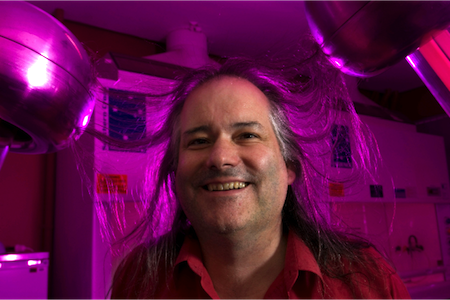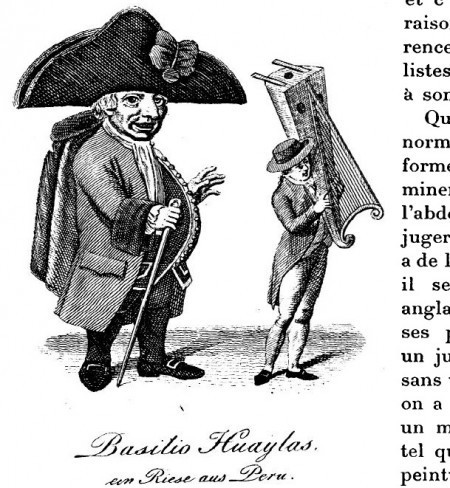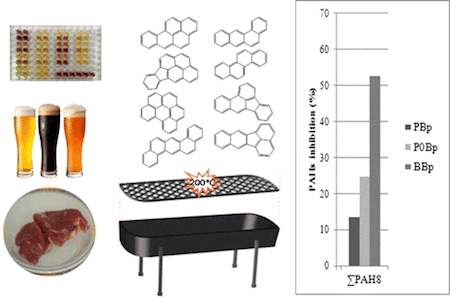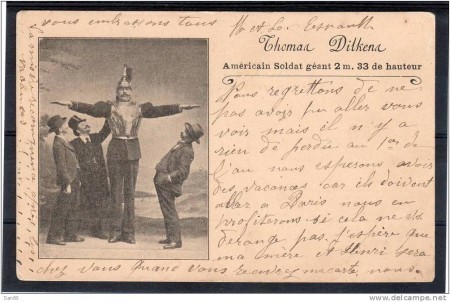Marc Abrahams's Blog, page 415
March 28, 2014
Stewart Walker joins Luxuriant Flowing Hair Club for Scientists (LFHCfS)
Stewart Walker has joined the Luxuriant Flowing Hair Club for Scientists (LFHCfS). He says:
I started growing his hair as a research experiment to trace variations in elements and isotopes. However, I have failed to attract government grants to get a hair cut and analyse the hair, so it is now a race to see if I can get the hair analysed before it all falls out.
Stewart Walker, Ph.D, LFHCfS
Associate Professor
Forensic, Environmental and Analytical Chemistry
Director of Centre of Expertise in Energetic Materials
School of Chemical and Physical Sciences
Flinders University
Adelaide, South Australia


Alex Dyson joins Luxuriant Flowing Hair Club for Scientists (LFHCfS)
Alex Dyson has joined the Luxuriant Flowing Hair Club for Scientists (LFHCfS). John Whittle, who nominated him, says:
Dr Alex Dyson embodies and exemplifies the core values of the Luxuriant flowing hair club for scientists. As a post doc at University College London in Clinical Physiology, Alex Dyson spends his time flamboyantly investigating the physiology of critical illness. A distinctive sight around the lab with his untrammeled tresses, thought to be the source of his cognitive powers, Alex is proud to have been nominated to join this respected institution.
Alex Dyson, Ph.D, LFHCfS
Postdoctoral researcher
Critical Care and Pain Medicine & Bloomsbury Institute of Intensive Care Medicine
University College London
London, UK


March 27, 2014
Chemical Effect of Beer Marinades on Charcoal-Grilled Pork
Some chemists, or perhaps many chemists, or perhaps no chemists, may feel obligated to revise their views on certain effects of certain marinades on certain substances, if they read this study:
“Effect of Beer Marinades on Formation of Polycyclic Aromatic Hydrocarbons in Charcoal-Grilled Pork,” Iria Yebra-Pimentel [pictured here], Elena Martínez-Carballo, Jesus Simal-Gandara, and Isabel M. P. L. V. O. Ferreira, Journal of Agricultural and Food Chemistry, 2014, 62 (12), pp 2638–2643. (Thanks to @SaraRorbecker for bringing this to our attention.) The authors, at the Universidade do Porto, Portugal and the University of Vigo, Spain, report:
“The effect of marinating meat with Pilsner beer, nonalcoholic Pilsner beer, and Black beer (coded respectively PB, P0B, and BB) on the formation of polycyclic aromatic hydrocarbons (PAHs) in charcoal-grilled pork was evaluated and compared with the formation of these compounds in unmarinated meat. Antiradical activity of marinades (DPPH assay) was assayed. BB exhibited the strongest scavenging activity (68.0%), followed by P0B (36.5%) and PB (29.5%). Control and marinated meat samples contained the eight PAHs named PAH8 by the EFSA and classified as suitable indicators for carcinogenic potency of PAHs in food. BB showed the highest inhibitory effect in the formation of PAH8 (53%), followed by P0B (25%) and PB (13%). The inhibitory effect of beer marinades on PAH8 increased with the increase of their radical-scavenging activity. BB marinade was the most efficient on reduction of PAH formation, providing a proper mitigation strategy.”

The giant Peruvian’s hat (1909)
 Along with its usual fare — ethnography and anthropology about the peoples of the Western Hemisphere — Paris’s Journal de la Société des Américanistes devoted part of its 1909 issue(*) to a sort of review article summarizing all known extremely tall people of the Americas.
Along with its usual fare — ethnography and anthropology about the peoples of the Western Hemisphere — Paris’s Journal de la Société des Américanistes devoted part of its 1909 issue(*) to a sort of review article summarizing all known extremely tall people of the Americas.
These were mostly modern cases of acromegaly who died before age 30, such as Edouard Beaupré, the Métis marvel from Manitoba; Ella Ewing of northern Missouri; James McIndoo, the Minnesota watch repair expert; Thomas Dilkens, a 7’4″ US soldier who was still alive as of 1909; and Santos Mamai, a Bolivian or possibly Peruvian whose death was mentioned in the New York Times.
Professor Blanchard goes into greater detail on two other Peruvians, Pierre (Pedro) Cano and Basile (Basilio) Huaylas, who may be the earliest American giants conclusively documented, thanks to the late-18th-century accounts of Franciscan missionaries Narciso Girbal y Barceló and Manuel de Sobreviela. But no words can capture the Lewis Carroll-esque wonder of this engraving of Basilio Huaylas and friend, adapted from a full-color illustration in the 1805 English translation of the friars’ narrative.

Blanchard estimates that Basilio Huaylas was actually less than 2 meters tall without the hat.
* * *
* See: “Sur quelques géants américains.” R. Blanchard, Journal de la Société des Américanistes (1909), vol. 6, pp. 62-74.
Follow Amboceptor on Twitter: @AmboceptorBlog

March 26, 2014
Ig Nobel shows (two of them!) in Stockholm Thursday
Here are details about:
the Ig Nobel Prize show at the Karolinska Institute on Thursday, March 27, at 3:30 pm, and
the show at ABF House, Sveavägen 41, at 6:30 pm.
And here’s the full schedule of events in Denmark, Sweden, and the UK (and elsewhere).

Failure to detect color vision in a non-malingerer
 If a person insists that they are color blind, how can you prove otherwise? This was the question facing Herbert Jägle, Bettina Sadowski, Jan Kremers, Hendrik P.N. Scholl, Beate Leo-Kottler, and Lindsay T. Sharpe, who set out to devise a method. Their 2003 study was carried out as a result of a court case, in which an individual had been accused of ‘malingering‘ – in the sense that he was not keen on joining the military, citing color blindness as a reason not to.
If a person insists that they are color blind, how can you prove otherwise? This was the question facing Herbert Jägle, Bettina Sadowski, Jan Kremers, Hendrik P.N. Scholl, Beate Leo-Kottler, and Lindsay T. Sharpe, who set out to devise a method. Their 2003 study was carried out as a result of a court case, in which an individual had been accused of ‘malingering‘ – in the sense that he was not keen on joining the military, citing color blindness as a reason not to.
A battery of tests using newly-developed cone-isolating flicker large-field ERG recordings showed, amongst other things, that the function of his long-wavelength-sensitive cones was completely absent. In other words was he was indeed a ‘protanope‘. See: Detecting color vision in a malingerer in : Documenta Ophthalmologica, March 2003, Volume 106, Issue 2, pp 121-128
Question: Could an alternative title for the paper be ‘Failure to detect color vision in a non-malingerer’?
Bonus: Three of the authors also contributed to a later study : Visual short-term effects of viagra: double-blind study in healthy young subjects in: American Journal of Ophthalmology, Volume 137, Issue 5, May 2004, Pages 842–849
[photo courtesy Martin Howard / Wikipedia]

March 25, 2014
Ig Nobel show at U of Copenhagen Wednesday night
Here are details about the Ig Nobel Prize show at the University of Copenhagen on Wednesday night, March 26, beginning at 7:00 pm.
And here’s the full schedule of events in Denmark, Sweden, and the UK (and elsewhere).

Mishmash Mishmash: Ball Inventor
Mishmash: the word is defined as “A collection or mixture of unrelated things; a hodgepodge“. Mishmash is also a name. This is the next in a series of little reports — a mishmash — of items about Mishmashes.
Roland Mishmash of Pueblo, Colorado, is coinventor of the device described in European Patent EP1825155A2, called a “Ball Transfer Device“. Here’s a technical drawing from the patent document:

Simulated High-Altitude Taste Testing of Tomato Juice
The taste of tomato juice has been tested at high levels —or, rather, at simulated high levels. This study contains details about that:
“Odor and taste perception at normal and low atmospheric pressure in a simulated aircraft cabin,” Andrea Burdack-Freitag, Dino Bullinger, Florian Mayer, Klaus Breuer, Journal für Verbraucherschutz und Lebensmittelsicherheit, March 2011, Volume 6, Issue 1, pp 95-109. (Thanks to investigator Dany Adams for bringing this to our attention.) The authors, at Fraunhofer Institut für Bauphysik, Germany report:
“During flights, reduced odor and taste perception is reported…. The conditions on board were simulated at the Fraunhofer flight test facility [pictured here] in Holzkirchen, Germany, consisting of a front fuselage of an Airbus A310-200 in a huge metal tube in which all relevant parameters can be adjusted (humidity, temperature, pressure). Flight tests were carried out at low atmospheric pressure corresponding to cabin conditions on board at cruising altitude and were repeated at normal atmospheric pressure corresponding to ground conditions. All other parameters were kept constant. Under these conditions, test persons smelled and tasted food-safe flavorants to evaluate the mean odor and taste thresholds and tasted different flavored food. Even tomato juice and various wines were tasted for odor and taste qualities, intensities and individual preferences…. Light and fresh flavors decreased, whereas intensive flavors persisted.”
BONUS: An exciting press release about the research
BONUS (possibly unrelated): Jetlag in horses

March 24, 2014
Horses and the effects of flying
“Horses are the only species other than man transported around the world for competition purposes.”
 - say investigators Domingo Tortonese, Julie Townsend, Cathy Fuller, ‘Twink’ Allen and Roger Short in ‘Jetlag in the horse: Neuroendocrine mechanisms underlying the effects of transmeridian flying on equine performance.’
- say investigators Domingo Tortonese, Julie Townsend, Cathy Fuller, ‘Twink’ Allen and Roger Short in ‘Jetlag in the horse: Neuroendocrine mechanisms underlying the effects of transmeridian flying on equine performance.’
“Changes in the 24h light:dark cycle, such as those associated with trans-meridian air travel, disrupt endocrine systems and affect athletic performance.”
That report is published by the Horserace Betting Levy Board, London.
Two of the authors, Dr Domingo Tortonese, DVM, DrVetSci(LaPlata), PhD(WVirginia) (Centre for Comparative and Clinical Anatomy, University of Bristol, UK) and Professor Roger Valentine Short, AM ScD Camb. FRSEd FAA FRCVS FRCOG FRANZOG FRCPEd FRS (of The Dean’s Ganglion, University of Melbourne, Victoria, Australia) also contributed to a later study, Biological rhythms, jetlag and performance in Thoroughbred racehorses (Equine Veterinary Journal, Volume 44, Issue 4, pages 377–378, July 2012) Oddly perhaps, the paper has no abstract or summary of any kind for non-subscribers, but Improbable can reveal that :
“Photoperiodic information is conveyed from the retina to a master clock in the suprachiasmatic nucleus (SCN) of the hypothalamus, which coordinates the activity of local oscillators in peripheral organs [2,3]. The signal imparted by the 24 h light:dark cycle is decoded by transcriptional–translational feedback loops that drive the rhythmic expression of clock genes in the SCN and peripheral oscillators [4]. This constitutes the molecular basis of the clockwork.“
BONUS (audio) Dr. Tortonese talks about hoses and jetlag
“What we found was more or less the opposite of what we were expecting, we found that horses do feel a change in the light/dark cycle very acutely, but they also recover very quickly, and this resulted in an improvement in their performance rather than a decrease in their performance, which was exactly the opposite of what we thought was going to happen.”
BONUS: Pegasus Airlines

Marc Abrahams's Blog
- Marc Abrahams's profile
- 14 followers







